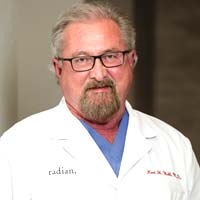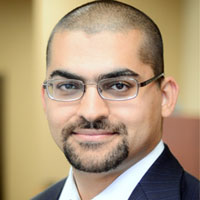Hair Transplant to Regain Eye Brows
Everybody knows about how hair transplant helps men and women who suffer from hair loss. Its efficacy in dealing with baldness in men has been proved by several successful cases and celebrity endorsements. Similarly hair transplant can be used to regain eye brows which may be lost owing to accidents like burns, violent attacks and so on.
Recently a man regained his confidence to step into the world with no hat or plasters which he used to cover the scar on is left eyebrow.
Karl Fitzgerald of Sandyford, Dublin was the victim of a violent attack by a stranger in 2010. He was attacked during the Galway races when his eye brows were pulled out inflicting severe pain and leaving an ugly scar in the eye brow area rendering it incapable of growing new hair.
As for the victim it was the psychological pain he had to endure by staying away from social gatherings and avoiding people’s inquisitive stare at his eyebrow which was more severe than the physical pain.
Like men with balding pates, he also hid under hats and plasters but kept looking for alternatives like hair transplant. But had to put it off owing to the prohibitive costs.
His search led him to Dr. Maurice P. Collins of Hair Restoration Blackrock (HRBR) a clinic which specializes in hair transplants. Fitzgerald went for a hair implants which cost him very less.
For the procedure, hair was removed from the neck region to match the texture of eye brow hair and implanted on the eye brow area restoring the original shape and thickness before the attack. The procedure was done over 18 months during which 450 hair were meticulously transplanted using the FUE method.
This procedure helped Fitzgerald return to his normal routine regaining confidence and self-esteem.
Hair Restoration Blackrock (HRBR) provides effective hair restoration treatments to patients. The treatment is divided into 3 stages. After a detailed consultation process the surgeons at the clinic decide the course of action. During consultation surgeons talk to the patient covering aspects like reassurance; proper assessment; counseling and monitoring.
This may be followed by medical treatment involving FDA approved medications namely Finasteride and Minoxidil. This method is used where it is found that medication will prevent intense hair loss and the patient will be able to regain hair growth effectively.
In cases were necessary, hair transplant surgery is recommended after checking if the patient is a suitable candidate. Ultra Refined Follicular Unit Transplantation (URFUT) is done here where hair from the back of the head is transplanted to bald areas.
This method is advocated as hair transplant surgery is a permanent solution to hair loss and the hair follicles that are transplanted live for the rest of the patient’s life and retain hair.
In some cases combination therapy is used which uses all the 3 methods.
Hairfear
Frequently asked questions about hair transplant procedures
How much does a hair transplant cost?
Hair transplants can vary in price based off of the area in the world that you are interested in getting a hair transplant as well as the size of the area where you may need a hair transplant. Experienced doctors in the United States will often charge some of the highest prices for a hair transplant worldwide and this is why so many travelers make the move to other parts the world like Turkey, India, Thailand, Mexico...etc for their hair transplants.
Will a hair transplant hurt?
Although hair transplants may look like a particularly
unpleasant or painful experience is actually very little discomfort involved
with the surgery itself. Hair transplants are always done under an anesthetic so there's absolutely zero pain during the treatment itself. Many people actually relate the process as being very similar to going to the dentist for filling or root canal. Mild pain can persist over the course of postop treatment but he generally just resumes for a few days.
Who can deliver the best surgery?
It's usually best to consider working with surgeons who have and IAHRS certification or international alliance of hair restoration surgeons recognition. IAHRS can often deliver recommendations for the best surgeons in each particular area.
Is this scarring noticeable?
Any type of hair transplant will require the use of incisions throughout the scalp. There can also sometimes be a small scar from the donor area towards the back of the scalp. Asking to look at photos of the surgeon's previous work will help you to see roughly how bad the scarring could be. In most cases an experienced professional can limit the look of scarring and noticeable marks from the surgery.
How long does it take for the hair to grow?
In most cases hair growth will start within eight months and you can start to see a full effect from the hair transplant after a full year. The initial signs of growth can usually start between 3 to 4 months after the surgery.
Are the results permanent?
The hair follicles that are transplanted are generally the ones which are genetically resistant against the symptoms of baldness. As long as you receive hair loss treatment later in your life after the symptoms of balding have started to subside, you can have a better chance at permanent results.
While everyone know you've had surgery?
If you want to limit the chance that people may find out about your surgery it's important to give at least three weeks of healing as the surgical area will be affected and red just after surgery. After around a month of healing it can look far less noticeable. You could consider wearing a hat while time passes or opting for some extra time off if possible.
How long should I rest after surgery?
It's recommended to rest for at least a few days after surgery so that your body can recover. Trenton to over exert yourself and limit sexual activity, running in the gym for around 10 days after surgery.
Is it possible to lose more hair as a result of surgery?
There is always a chance of shock loss which happens when the hair is weak and miniaturizing after the surgery. As long as the surgeon is choosing the correct hair follicles and performing the surgery well it's possible to minimize the chance of this happening however.
Will I need another hair transplant?
The need for another transplant really depends on the individual. With a solid foundation surgery and working to potentially bolster results with drug therapy, you can improve the stability of the hair that was transplanted as well as prevent further loss. Getting a hair transplant early
on in your 20s or early on in life could lead to needing long-term transplants as hair loss can be progressive.







